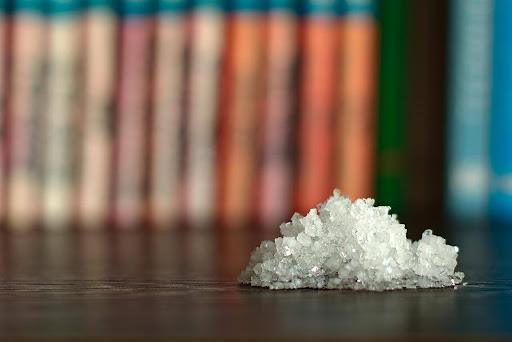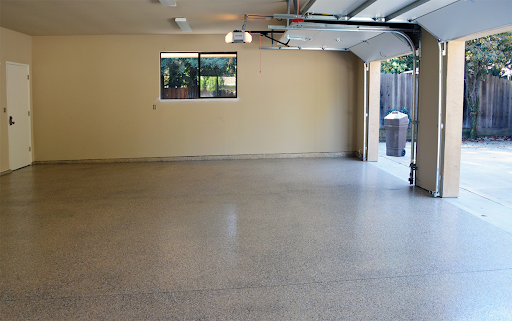Salt has a way of sneaking into nearly everything. It hides in condiments, clings to processed snacks, and clutters up canned goods and frozen meals. While a small amount is necessary for basic function, too much can tip the balance in ways that affect energy, circulation, and long-term health.
For many people, especially those managing high blood pressure, kidney disease, or heart concerns, sodium becomes a silent factor in how well the body operates.
But, reducing sodium does not mean that you make your food bland or punishing. It means giving the body space to work with less resistance.
The good news is that lowering sodium does not require deprivation. It just requires awareness. And the benefits are not distant possibilities. They are tangible, felt in daily life, often within weeks.
From lighter limbs to steadier moods and deeper sleep, a low-sodium diet quietly resets the body from the inside out.
Here is what really happens when salt takes a back seat.
Why People Are Turning to Lower Sodium Eating
There was a time when sodium was only discussed in medical offices, usually after a health scare. But now, more people are asking questions sooner. They are reading labels, cooking differently, and seeking out meals with cleaner profiles, not just because of a diagnosis but because they want to feel better in their daily lives.
The Standard American Diet is notoriously high in sodium, with the average adult consuming over 3,300 mg per day, far above the recommended 2,300 mg limit set by the Centers for Disease Control and Prevention.
This matters because sodium does not just affect people with existing conditions. It affects hydration, cognitive clarity, kidney function, and even how we sleep. The more processed and convenient our meals become, the more sodium sneaks in. And that has created a renewed interest in simple, sustainable alternatives.
But options like low-sodium meal delivery services have made it easier for people to adopt this lifestyle without needing to learn how to cook everything from scratch.
Here are some reasons why you should also cut back on salt right away.
Supports Healthy Blood Pressure
This is the most widely known benefit, and for good reason. Sodium pulls water into the bloodstream, which increases blood volume. The higher the volume, the harder the heart has to work to push blood through.
Over time, this added pressure wears down arteries, increasing the risks of heart attack, stroke, or kidney damage.
For people with hypertension, even small reductions in daily sodium can result in noticeable improvements in blood pressure readings. And for those without a diagnosis, lowering sodium is one of the most powerful ways to prevent future issues.
Reduces Bloating And Fluid Retention
Some people think they are gaining weight when really, they are just retaining water. Sodium causes the body to hold onto fluid, especially in the hands, feet, and face. This can lead to puffiness, a sense of heaviness, and even discomfort in movement.
Cutting back on salt helps the kidneys flush out excess water, restoring a lighter, more balanced feeling in the body. Clothes may fit better, and your ankles may feel less tight. The belly may even flatten slightly without any change in body fat just because inflammation and water weight have gone down.
Supports Kidney Function
The kidneys clear waste from the blood and manage fluid balance. When sodium levels are consistently high, the kidneys must work overtime to keep things stable. As time passes, this added strain can damage the filtration system, especially in people with diabetes or other metabolic issues.
A low-sodium diet helps ease the kidneys’ workload, allowing them to do their job more efficiently. It is a quiet but powerful way to protect long-term health and reduce the risk of chronic kidney conditions.
Enhances Sleep Quality
It may seem surprising, but sodium affects sleep. High sodium intake can raise blood pressure during the night and disrupt the balance of electrolytes that regulate fluid movement in and out of cells.
This can cause nocturnal awakenings, increased trips to the bathroom, and difficulty falling into deep, restorative sleep.
Lowering sodium levels can promote more stable fluid balance and better nervous system regulation. As a result, sleep may become deeper, more consistent, and more refreshing.
Better sleep improves everything, such as your mood, metabolism, concentration, and immunity. And it often starts with the dinner plate.
Improves Taste Sensitivity
When people first start reducing salt, food may taste bland. But the palate adjusts surprisingly quickly. After a few weeks, natural flavors become more noticeable, like sweetness in carrots, earthiness in mushrooms, brightness in tomatoes.
Once the constant flood of sodium is lowered, the tongue starts to register subtleties again. And that makes food more satisfying, even when it is simpler. This is especially helpful for seniors who may already be experiencing some loss in taste perception due to age or medication.
Reduces The Risk Of Stroke
Excessive sodium raises blood pressure, which is the leading risk factor for stroke. A stroke happens when blood flow to the brain is blocked or interrupted, and it can lead to long-term disability, cognitive loss, or death.
Reducing sodium intake directly lowers this risk. Even a moderate decrease in daily consumption can significantly reduce stroke probability over time, especially when combined with regular physical activity and a diet rich in vegetables, whole grains, and healthy fats.
This is not a distant benefit. It is one that affects whether someone can speak clearly, walk independently, or continue doing what they love in later years.
Supports Heart Rhythm And Electrolyte Balance
Sodium is one of several key electrolytes in the body, alongside potassium, magnesium, and calcium. These minerals work together to maintain fluid balance and regulate the heartbeat.
When sodium intake is too high, and potassium is too low, the electrical signals that control the heart’s rhythm can become erratic. This may result in palpitations, dizziness, or even arrhythmia in susceptible individuals.
A diet that lowers sodium while increasing potassium-rich foods like bananas, spinach, beans, and sweet potatoes helps stabilize the heart’s rhythm and protect against cardiovascular complications.
This kind of balance is not felt immediately, but it shows up in resilience, like how quickly someone recovers from exertion, how often they feel light-headed, and how steady their pulse feels under stress.
Final Thoughts: Let the Body Lead
There is no single food rule that applies to everyone. But for many, reducing sodium opens the door to deeper, more consistent well-being. It softens inflammation, supports circulation, protects organs, and allows the body to function without unnecessary stress.
And the best part is that it is a quiet transformation. It does not require deprivation, only attention. It also does not ask for perfection, only your presence.
Whether it is done for medical reasons, for energy, or for prevention, choosing a lower-sodium lifestyle is one of the most grounded, self-respecting steps anyone can take.
At the end of the day, your focus should not be on what is missing from the food. Instead, it should revolve around what becomes more possible in life when the body is not working overtime to process what it never needed in the first place.









